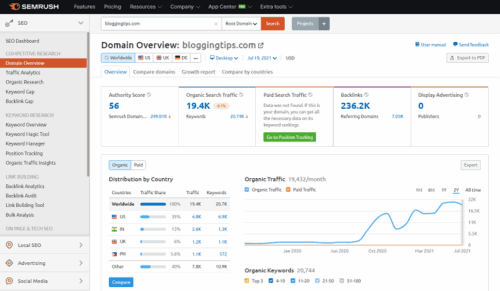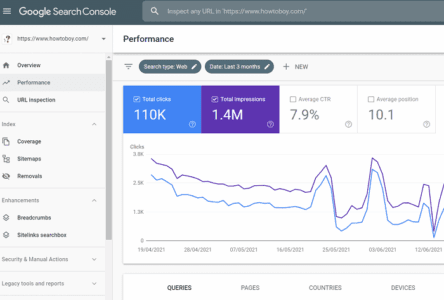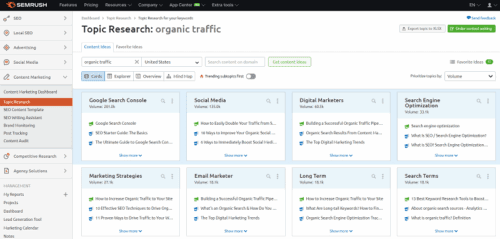
Are you stuck? Are you struggling to find new blog post ideas? Well, I can understand you and help you find topics that people want to read about.
There are many ways to get an idea for your next blog post. A recent update in your niche or recently read content may inspire you to write a blog post on similar topics.
Something you have experienced in real life, like a WordPress error code, could also lead you to craft a detailed guide with step-by-step instructions to solve things. You can reasonably expect articles written in this way will attract more audience and increase blog traffic.
Such perceptions may not always work. Search engines are the primary source of traffic for any website. If your content relates to a low-demand topic, traffic will be light.
So it is essential to work on blog post ideas that have a lot of demand. Apart from keyword research, is there any way to uncover viral topics for your upcoming blog posts?
Yes. Let’s check different methods to find content ideas and learn how to filter them to pick traffic generation topics.
Are you ready?.
| Disclosure: Your support helps keep the site running! We earn a referral fee for some of the services we recommend on this page. |
6 Ways to Generate Unlimited Blog Post Ideas
From social networking sites to blogging communities, you can find inspiration from various places. They include Pinterest pins, Flipboard flips, and so on.
Follow niche topics and key influencers across platforms to improve your knowledge. It will help you collect new ideas and build better relationships with industry leaders.
I am going to list 6 proven methods to reveal blog post topics that work best for you.
1. Competitive research
Competitive research is the best method to collect blog post ideas. It helps you identify top posts that generate traffic and money for your competitors.
Prepare a list of niche competitors first. Avoid top domain authority domains that have more high-quality backlinks than yours. Since Google considers backlinks as one of the main ranking factors, it will be difficult to beat them in the ranking competition.
Then, head to Semrush and enter a domain name in the search box to analyze their traffic and organic keywords.
After hitting the Enter button, you will get a screen like this.

Scroll down to the organic keywords section. Tap View Details to track keyword rankings of your competitors. A new page will open with their ranking keywords with positions, traffic, and other metrics.

It is better to exclude keywords with 50 or higher Keyword Difficulty. They are difficult to rank, and you should take extra efforts like building more dofollow backlinks to make such topics work.
Semrush allows you to filter keywords by search positions, volume, KD, and other conditions. Click KD on the top and apply a 0-49 custom range to find less competitive keywords of the competitor.

By default, Semrush displays keywords in the order of traffic percentage or how much of the total traffic each keyword contributes to the domain. Use other options to locate various types of keywords you need. Just click on them and Semrush will display terms in the order of,
Volume: Sort keywords by the search volume. Keywords with a large search volume appear at the top.
KD: Sort keywords by difficulty rate. Keywords having a ‘0’ rate come on top.
CPC: Sort keywords by CPC rate. Best to find the top money-making keywords of any site
These are the top-performing less competitive keywords of your competitive site.
If you want to remove low-volume keywords from results, go back to filters again and click on volume. Enter a figure in the from field (eg, 50) and press Enter. It shows terms having a minimum of 50 searches per month.
Semrush also displays a page URL on the right side that is ranking for each keyword. Copy and paste it into the search box to access individual page metrics such as ranking keywords, competitors, traffic percentage, backlinks, etc.
Choose the ‘exact URL’ option from the drop-down box. Otherwise, it will show overall site metrics only.
Then, you will get a screen like this,

This page covers the page authority score for the target URL, search traffic, backlinks, and many other things. Scroll down to locate other keywords ranking on the page.

Export them in an Excel file to include in the new blog post.
Repeat these steps for all your competitive domains. This strategy helps you to generate unlimited blog post ideas and increase traffic in a few weeks.
2. Google Search Console
Google Search Console is one of the best free SEO tools to discover your top organic keywords, pages, and traffic distribution countries. It is also useful to monitor search impressions and clicks from each device type.
Sign in to your Search Console account and open the site property on which you are planning to write the blog post. Click Performance from the left pane.

This page shows your search engine traffic performance for the last 3 months. Change the period to access recent or historical data.
On the bottom, you can see the top search queries that bring the most traffic. If you want to view individual traffic trends and metrics, click a term. It will provide more details on the next page.
Copy a top-performing keyword from the query report. Visit Semrush and paste it in the search box to find related keywords.

Open the Keyword Magic tool to collect related keywords matching your query.
Suppose you have a blog post ranking for the keyword ‘shared hosting’. Analyze it on Semrush to view related phrases and questions.
These are some suggestions you will get (search volume and Keyword Difficulty in brackets)
- VPS vs shared hosting (390, 41)
- Cloud hosting vs shared hosting (170, 40)
- Shared hosting vs WordPress hosting (170, 46)
- Best shared hosting Europe (50, 27)
- Fastcomet shared hosting (70, 38)
- GoDaddy shared hosting (170, 56)
- Bluehost shared hosting (110, 61)
Create posts on less competitive topics and link them from your current blog post. It helps you to redirect some visitors to new pages and reduce the bounce rate.
Read Semrush Review: Is It the Best SEO Tool?
3. Google Analytics
Monitor your traffic to find keywords that work best for you. Google Analytics tracks visitors and lets you know what your top-performing posts are, how long people spend on pages, and where they are coming from, etc.
Finding the popular content helps you to create follow-up posts or prepare content on similar topics. Add internal links to boost traffic between these blog posts.
Sign in to Google Analytics and open your site property. From the left pane, expand the Behaviour report and click on Site Content.

Visit the All pages tab to find best performing pages on the site. Analyze their traffic, average session time, and bounce rate.
If your bounce rate is high, it means that people exit the page without visiting any other page. Create content on similar subjects and link them from your existing blog post.
For that, open a keyword research tool like Semrush to detect related phrases. Consider adding FAQ sections in the new content to answer questions matching your query.

Answer the Public is another free keyword research tool to find the most popular questions and comparisons on your target topics.
Enter a keyword and it will generate a visual chart with trending queries asked by real users on top search engines. Download and include them in your blog posts to boost traffic from search engine results.
4. Pinterest keyword research
Pinterest is a great place to pin your blog posts and promote products. You can also use it for topic suggestions.

The photo-sharing network suggests recommended pins for sharing on your home feed. It generates suggestions based on the topics you follow and keywords on your pins.
Use the search box and enter your target keyword to find pins on certain topics. Then, you will get hundreds of matching pins or content ideas at the bottom. Pick a subcategory to refine your search. For instance, I searched for pins relating to ‘make money’.
It brought an unlimited number of pins relating to making money online with ChatGPT, blog, YouTube, and so on. To get ideas for making money from Instagram, I should pick the subcategory ‘Instagram’. This way, Pinterest can generate infinite content ideas for your upcoming blog posts. Connect to Semrush or Ubersuggest to track search trends for your target keyword.
5. Flipboard

Flipboard is a news aggregator platform to follow your favorite topics and magazines. It will show trending topics in your category and from top websites on your home feed. Thereby, it updates you with the latest industrial news without the need to visit different websites.
Create magazines to save (flip) posts for future reading or collecting ideas for upcoming posts. People can follow your magazines and visit your links. This way, you will get some traffic on your blog posts. Flipboard is one of the best places for getting content ideas and promoting posts.
6. Semrush topic research
Semrush’s Content Marketing Toolkit is another place to generate unlimited blog post ideas. It also helps you to prepare SEO-friendly content with real-time readability, SEO checks.
Sign in to Semrush and visit the Content Marketing dashboard. Click on Topic research.
Enter a topic like WordPress SEO or domain authority in the search box. Set a target location. Semrush will search for web pages that contain your target keywords and display them in the form of cards.

By default, it lists topics with the highest search volume at the top. But you can sort them by difficulty score and topic efficiency using the drop-down box on the right side.
Mouse over a title to know how many backlinks you need to rank higher in SERPs for the topic. Click to expand the card with more metrics such as search volume, difficulty rate, and topic efficiency.

Next, it shows matching headlines and questions. Click on the + symbol to add an idea to your favorites.
Once you have collected all similar content ideas, switch to the Favorite Ideas tab at the top.
From this page, you can create an SEO Content template or schedule the task, or send it to Trello. Choose an appropriate method to create search-engine-loving posts in a timely manner.
Conclusion
Finding unique blog post ideas helps you develop viral content and increase your web traffic. Spy on competitors to analyze and steal their top-performing keywords. Filter results to collect less competitive but high-volume search queries.
Semrush is the #1 SEO tool for keyword research, competitive analysis, and content marketing. It can find profitable keywords and optimize your strategies to increase your website traffic.
Google Search Console and Google Analytics are other good places to get new blog post ideas. Create follow-up or related posts and connect them like a chain (1-2-3) to encourage visitors to spend more time on your pages.
Click here to activate a 7-day free trial on Semrush and generate unlimited less competitive blog post ideas for your website




